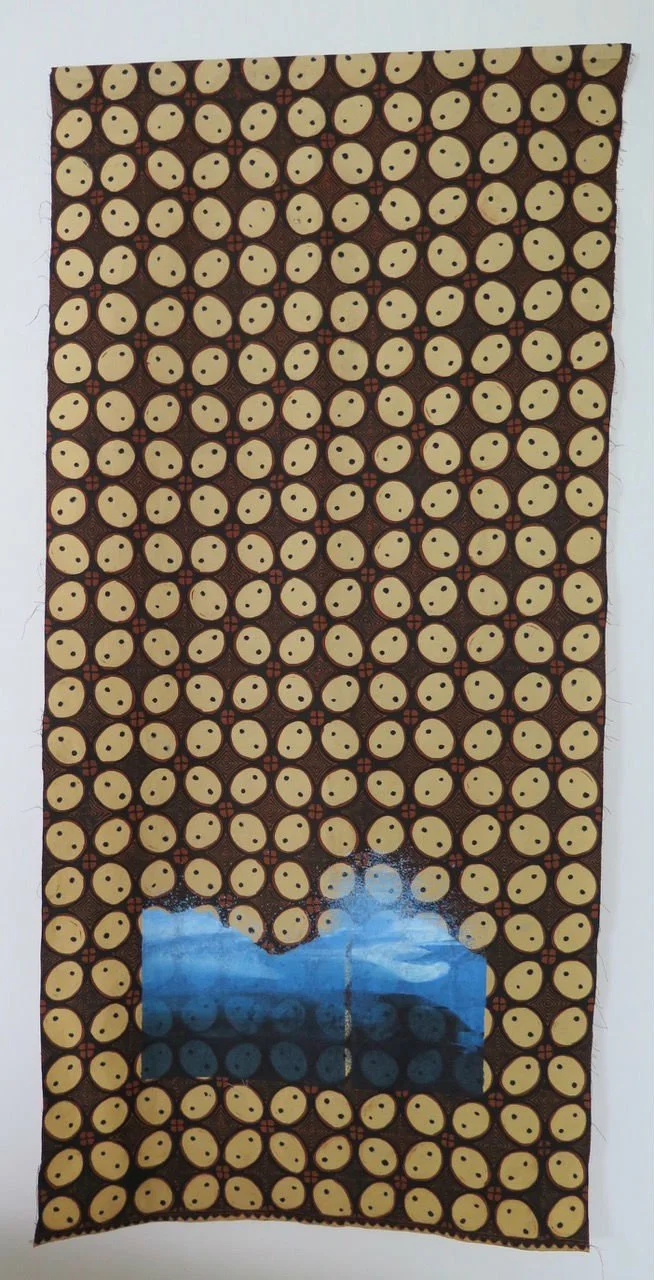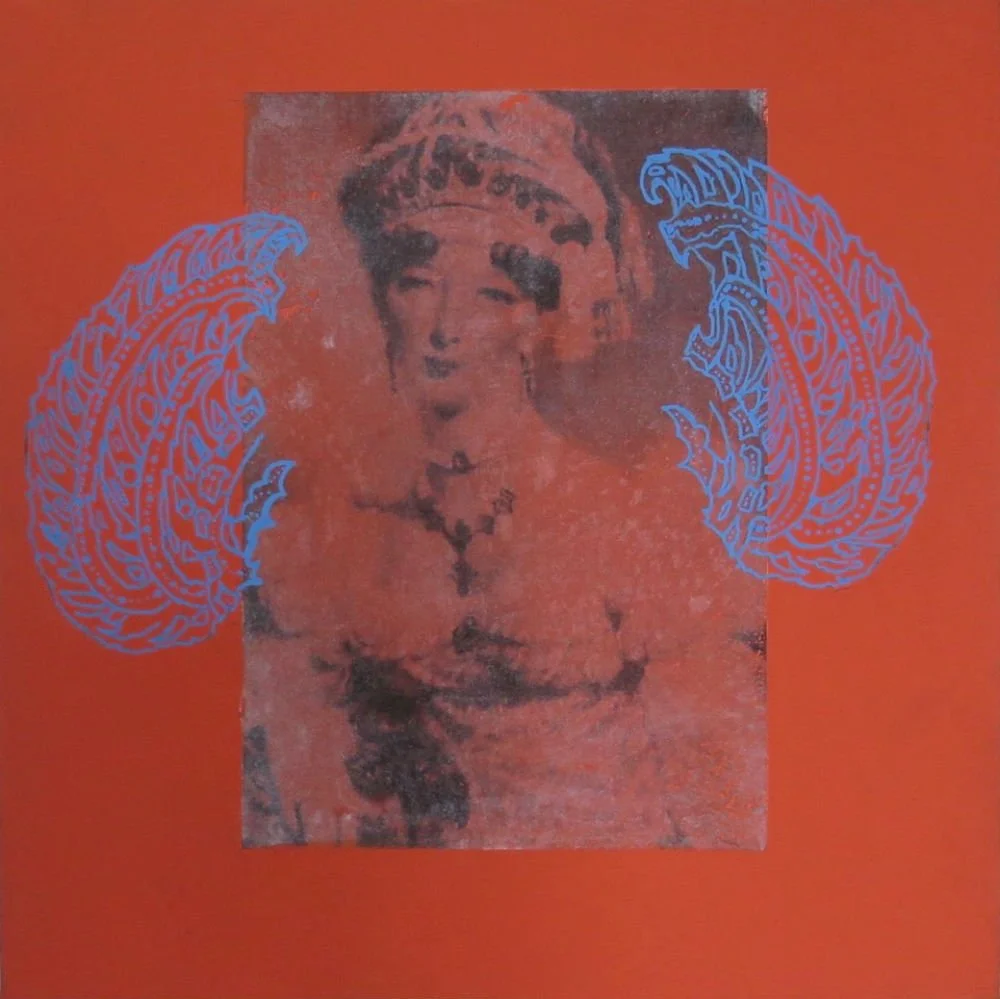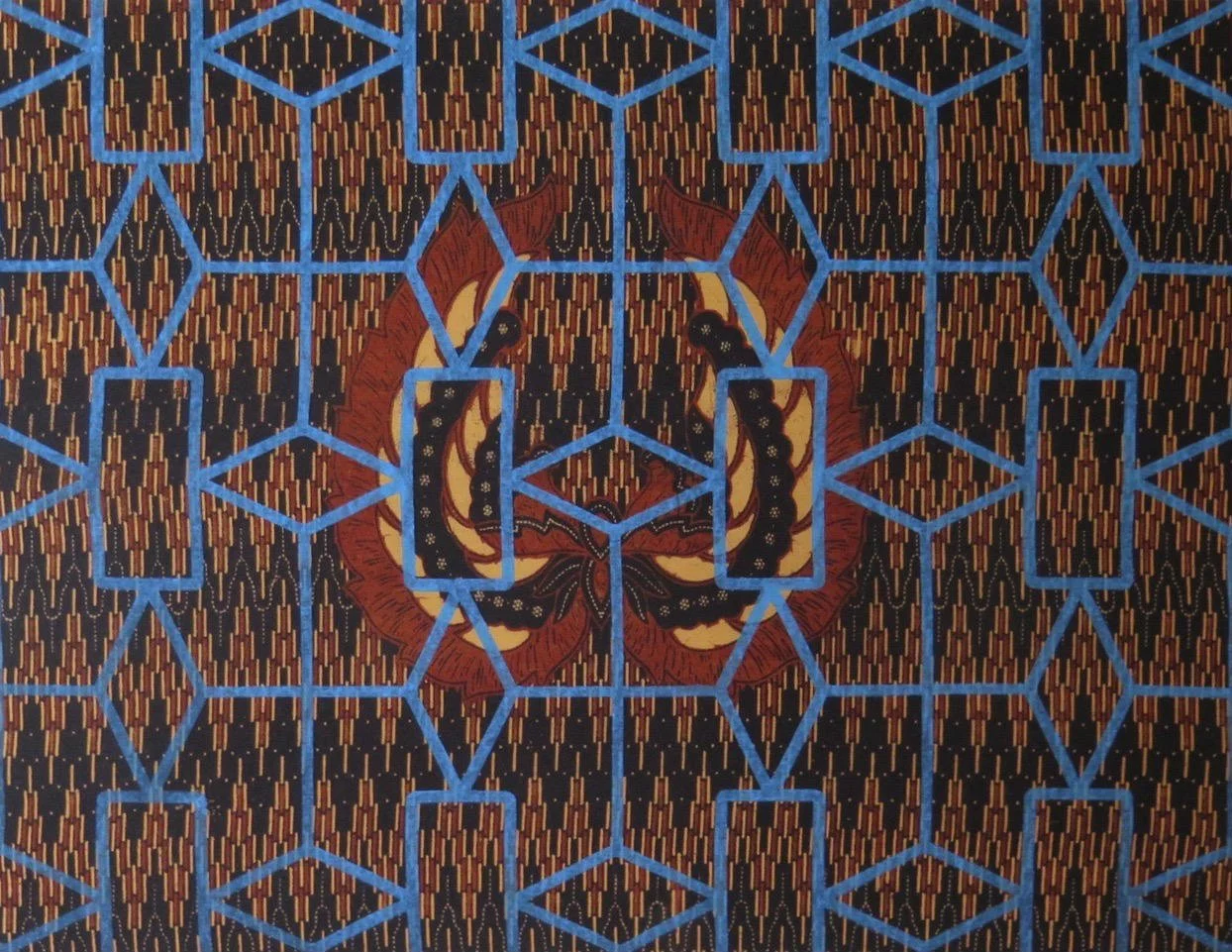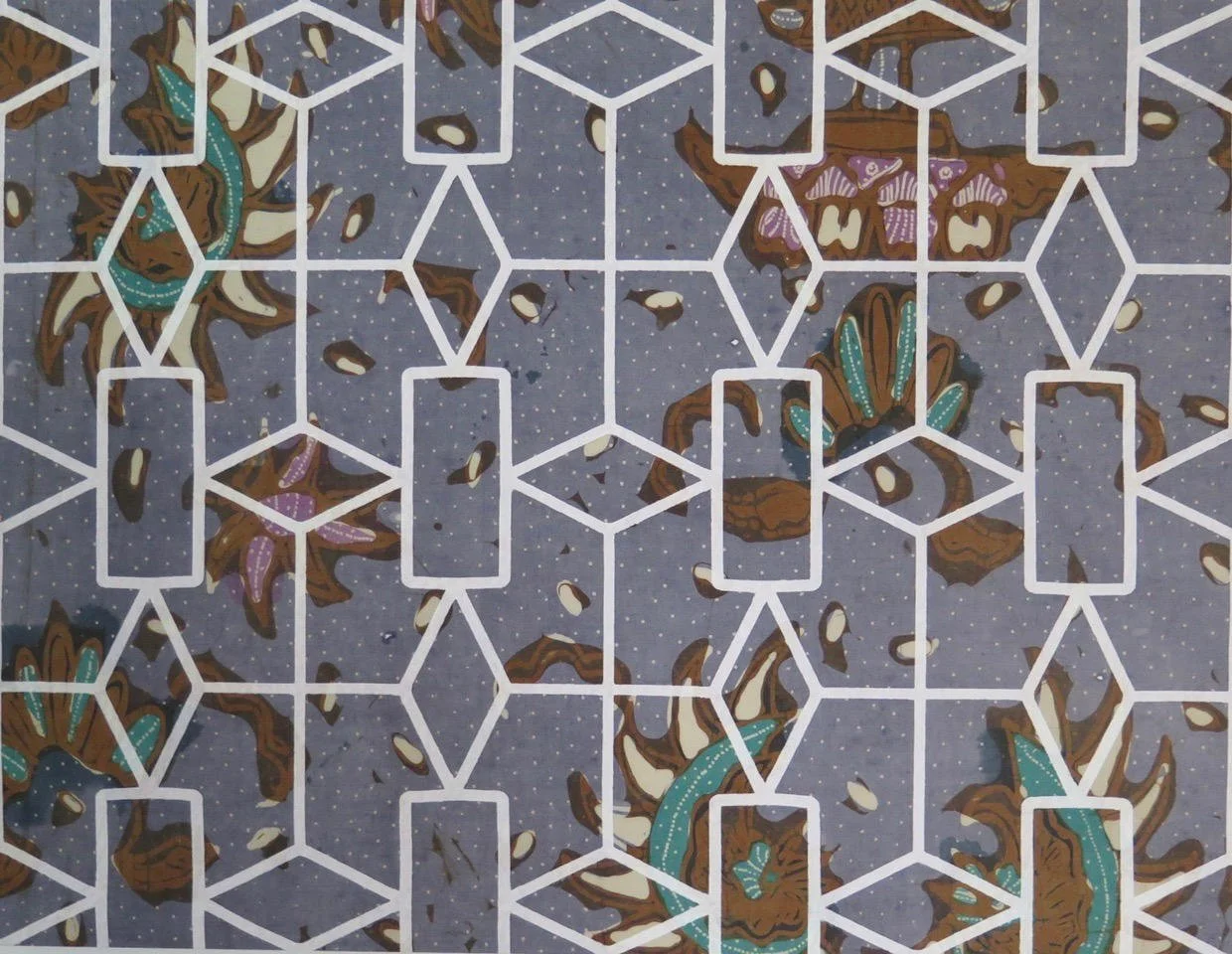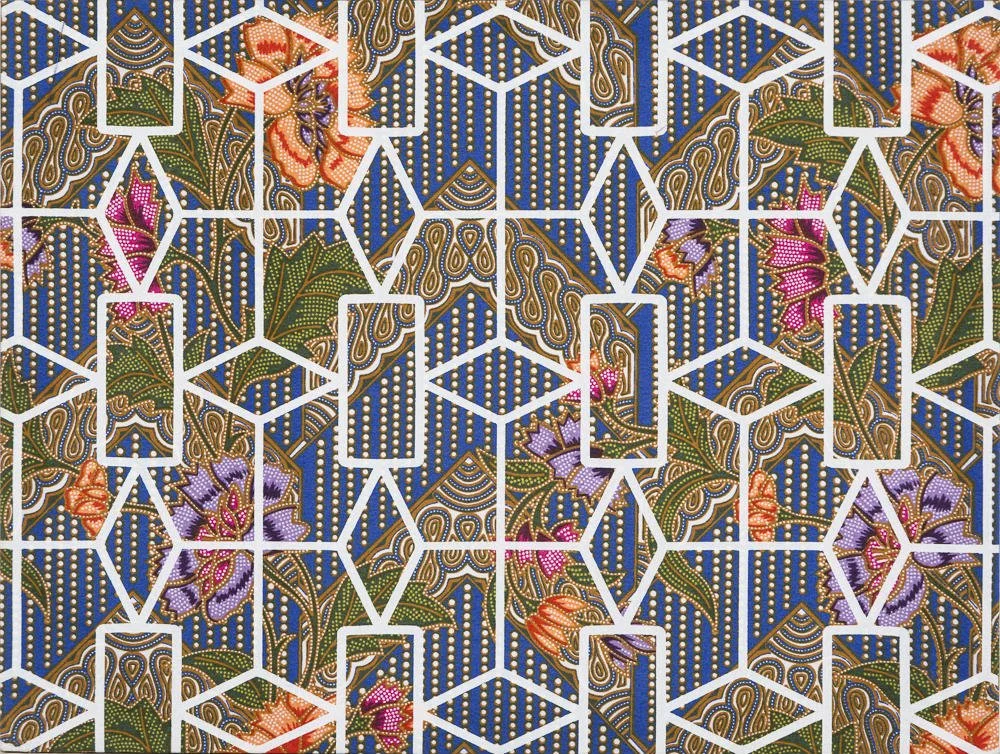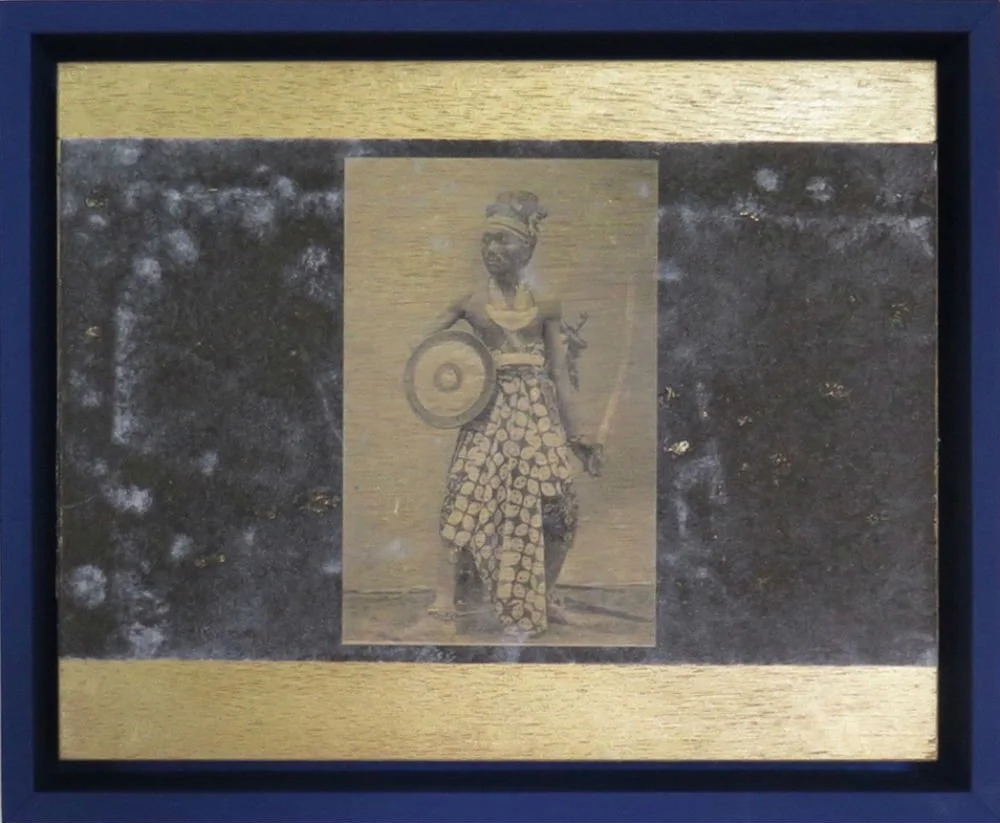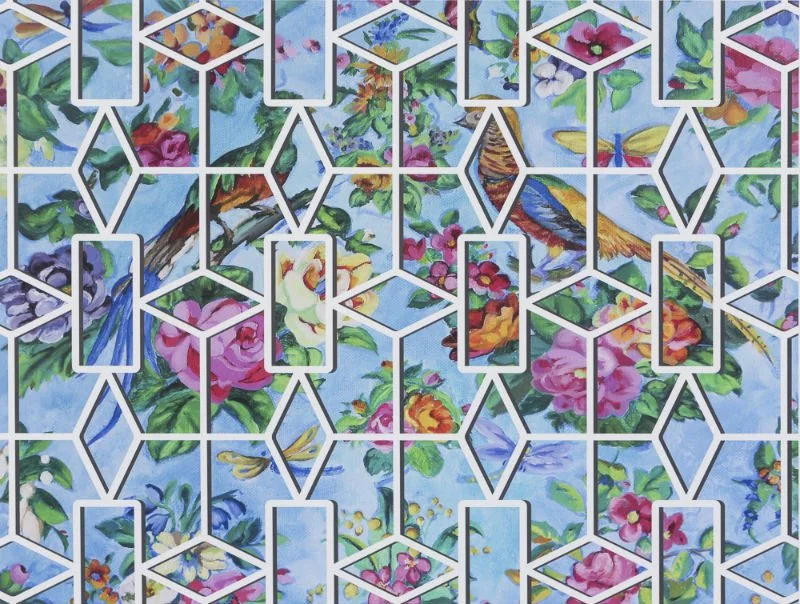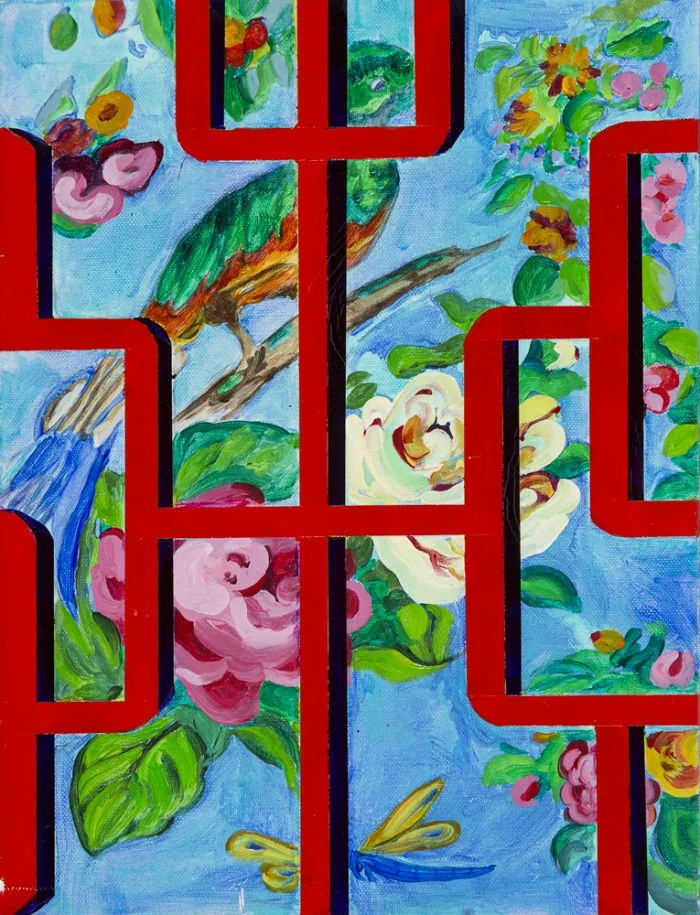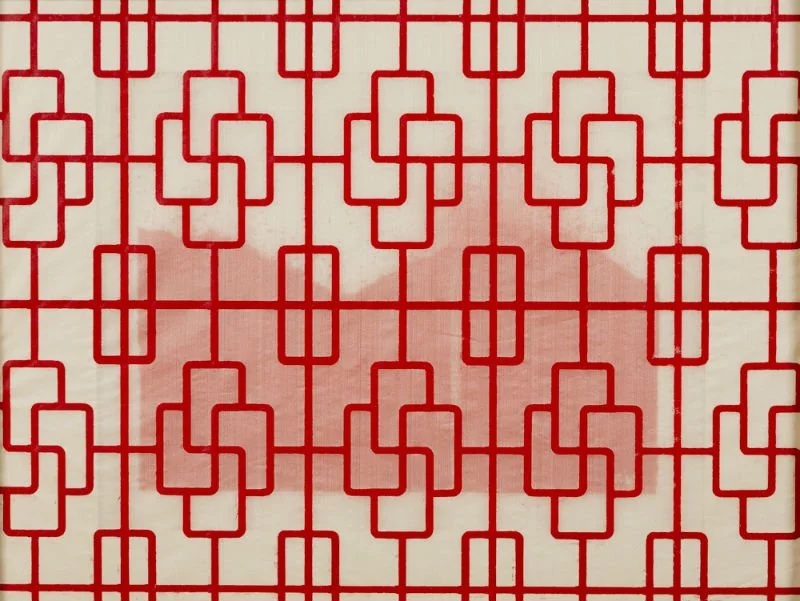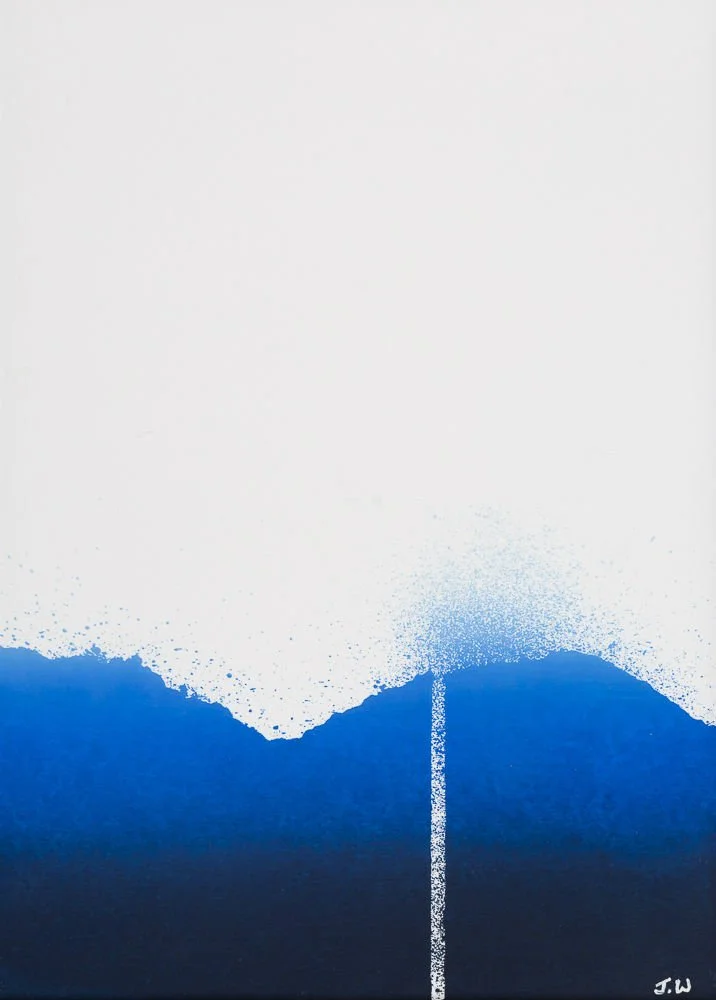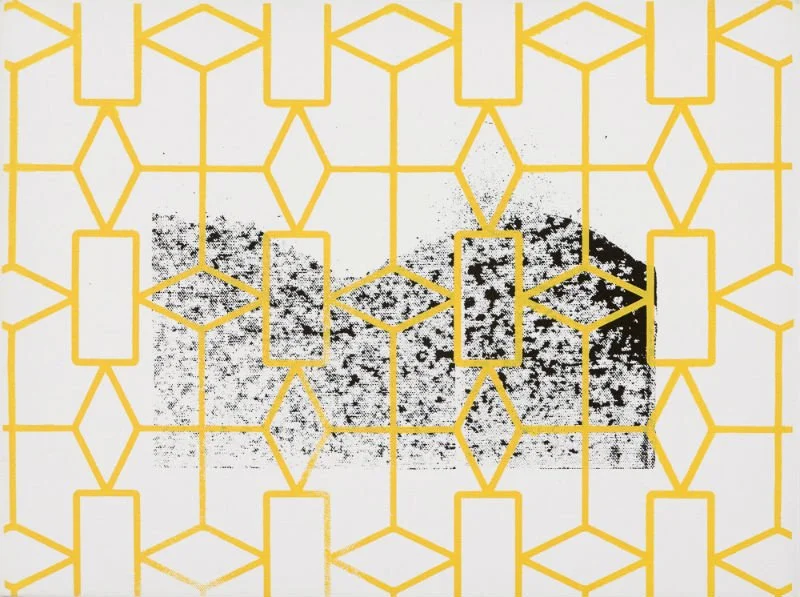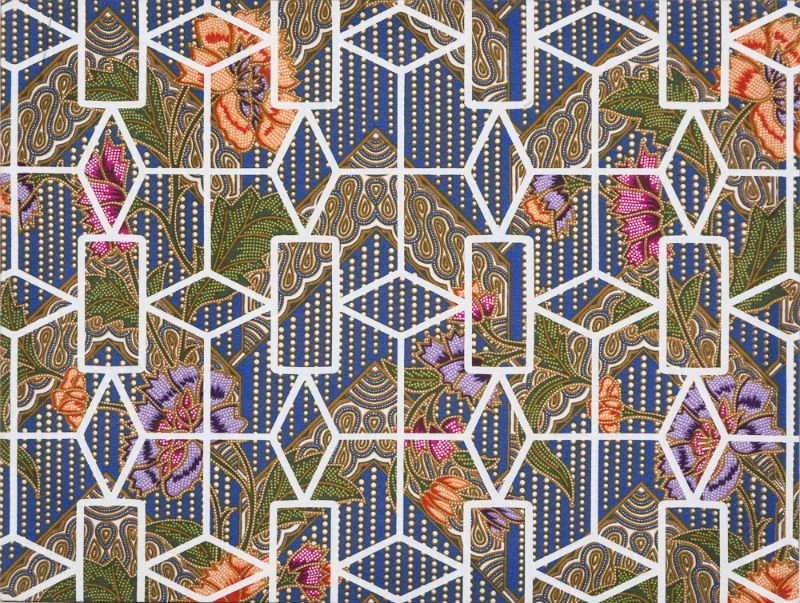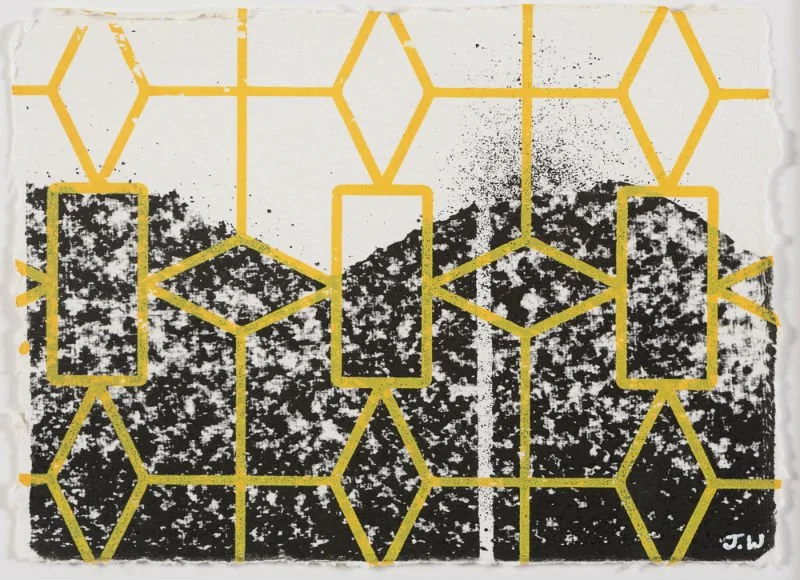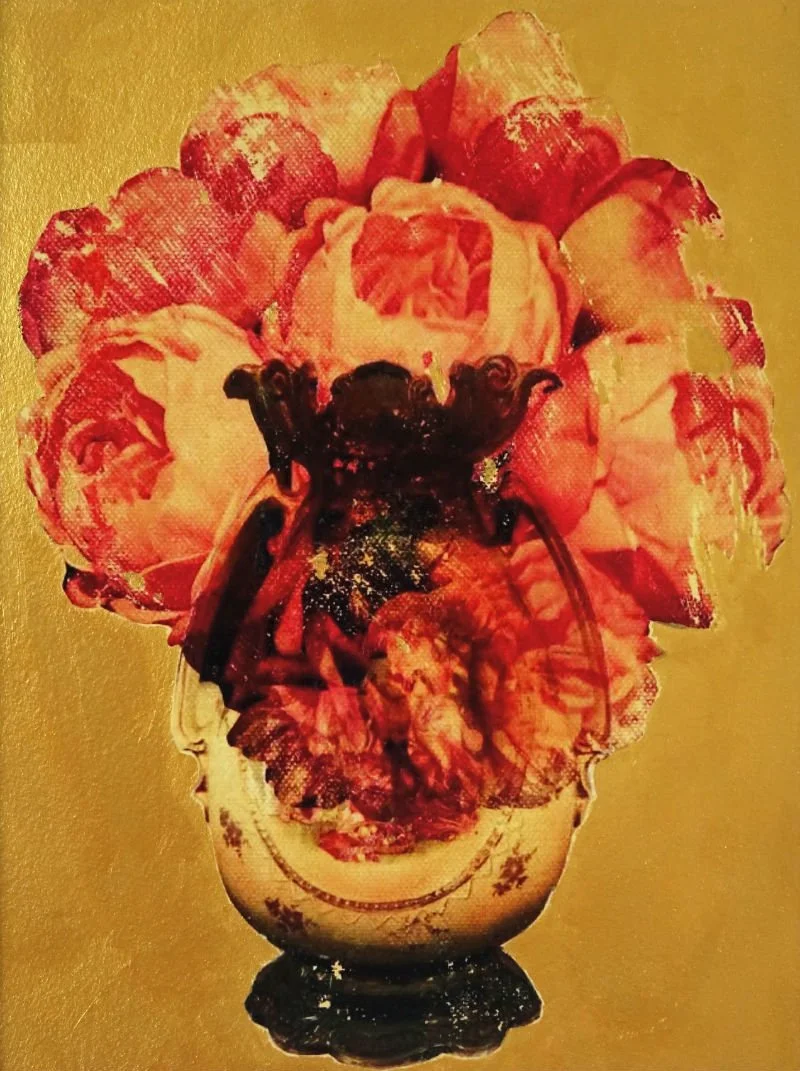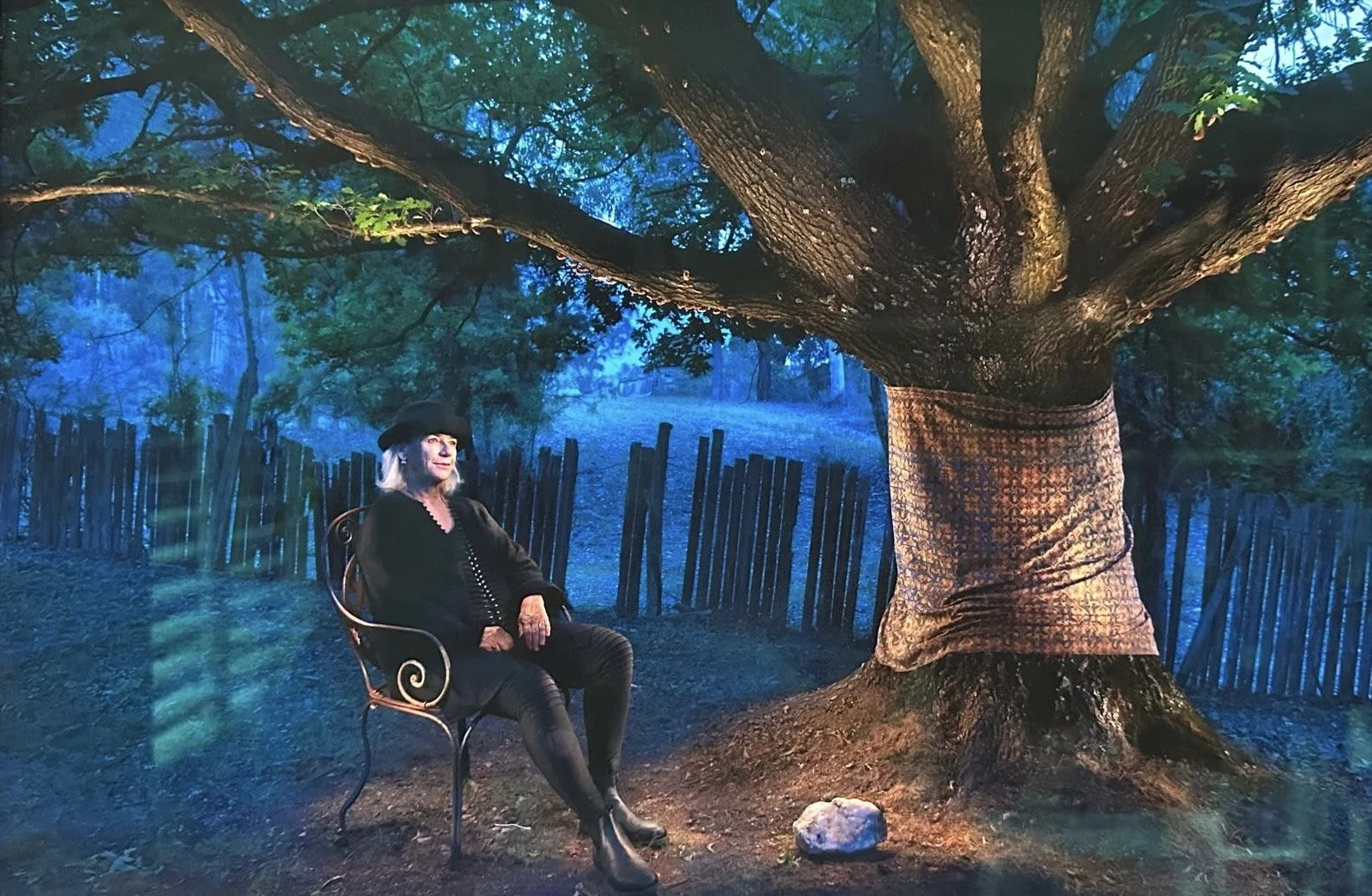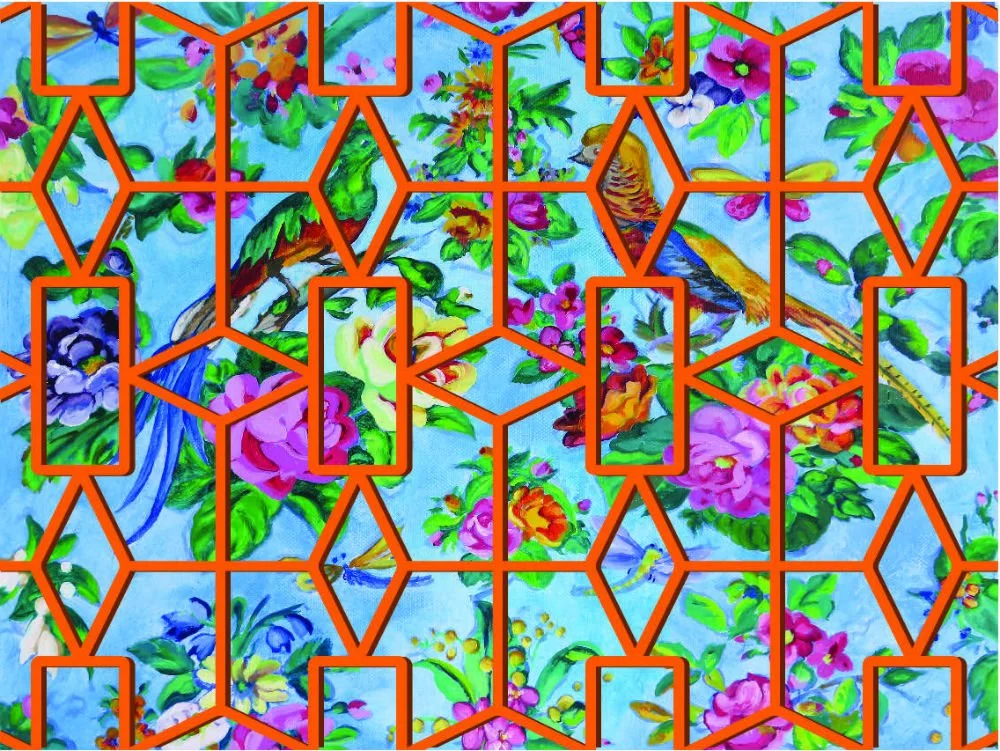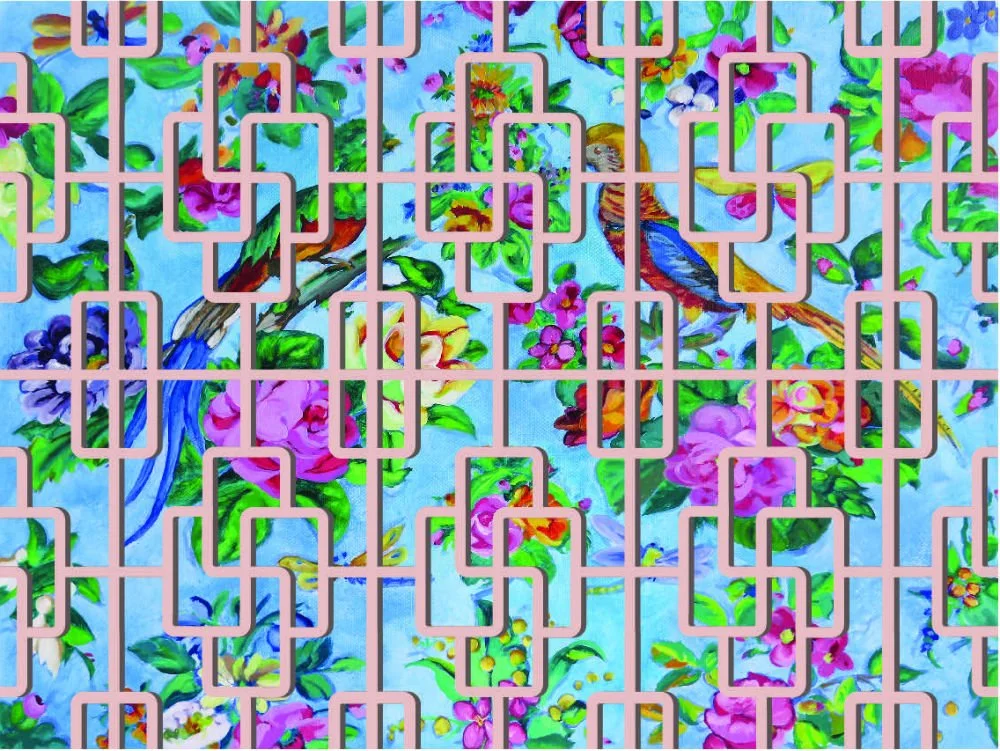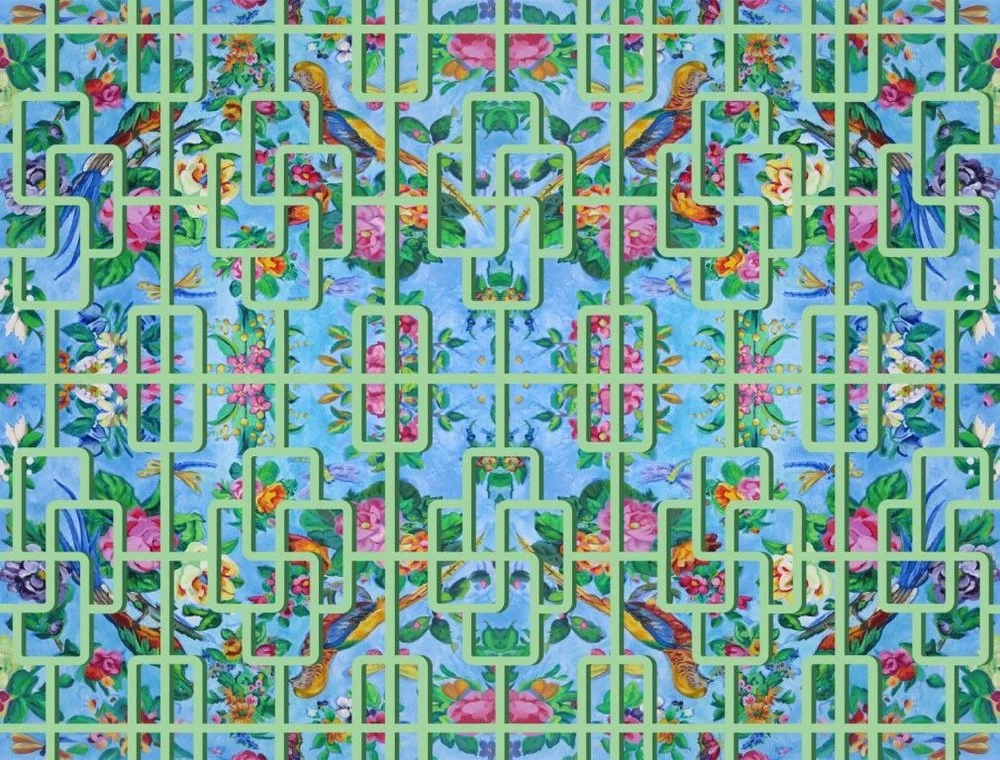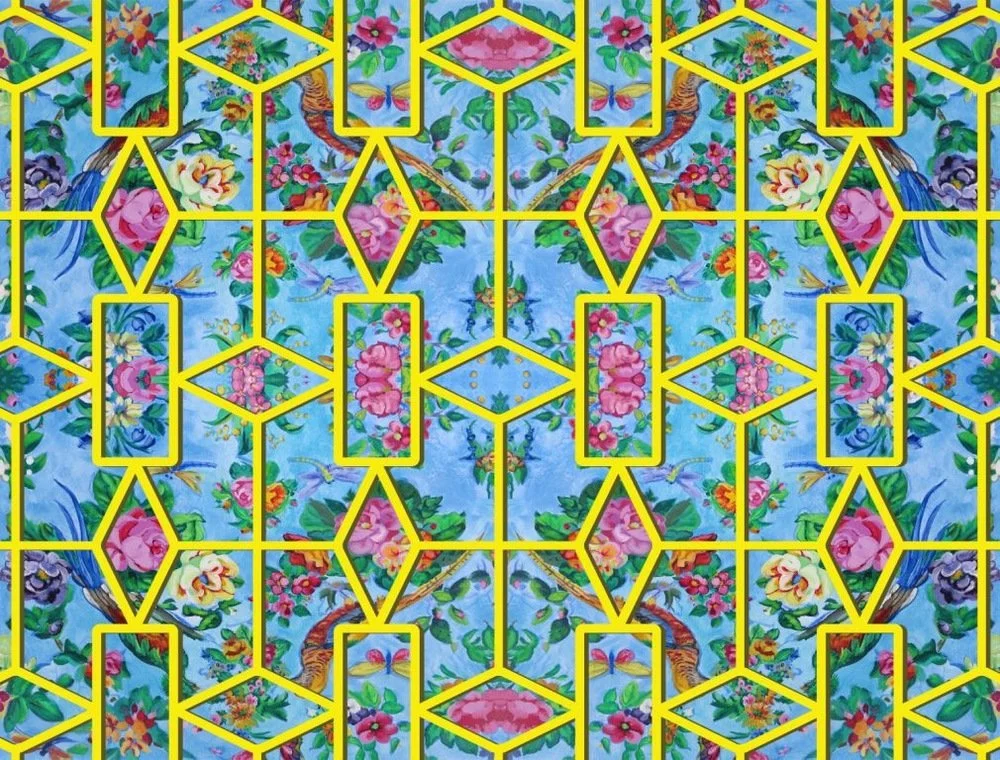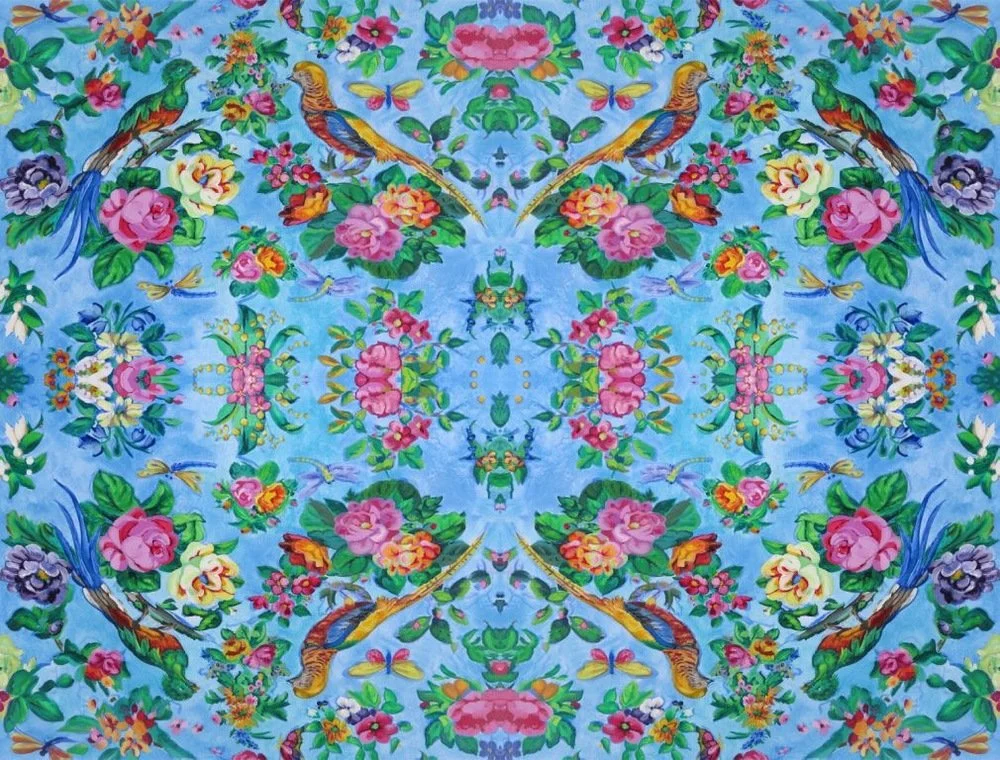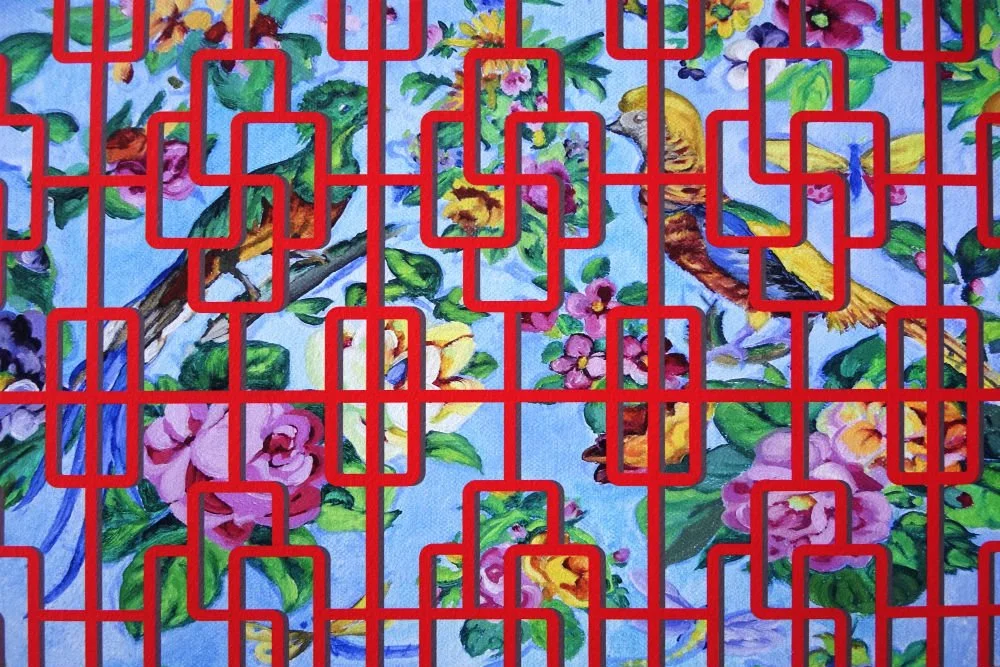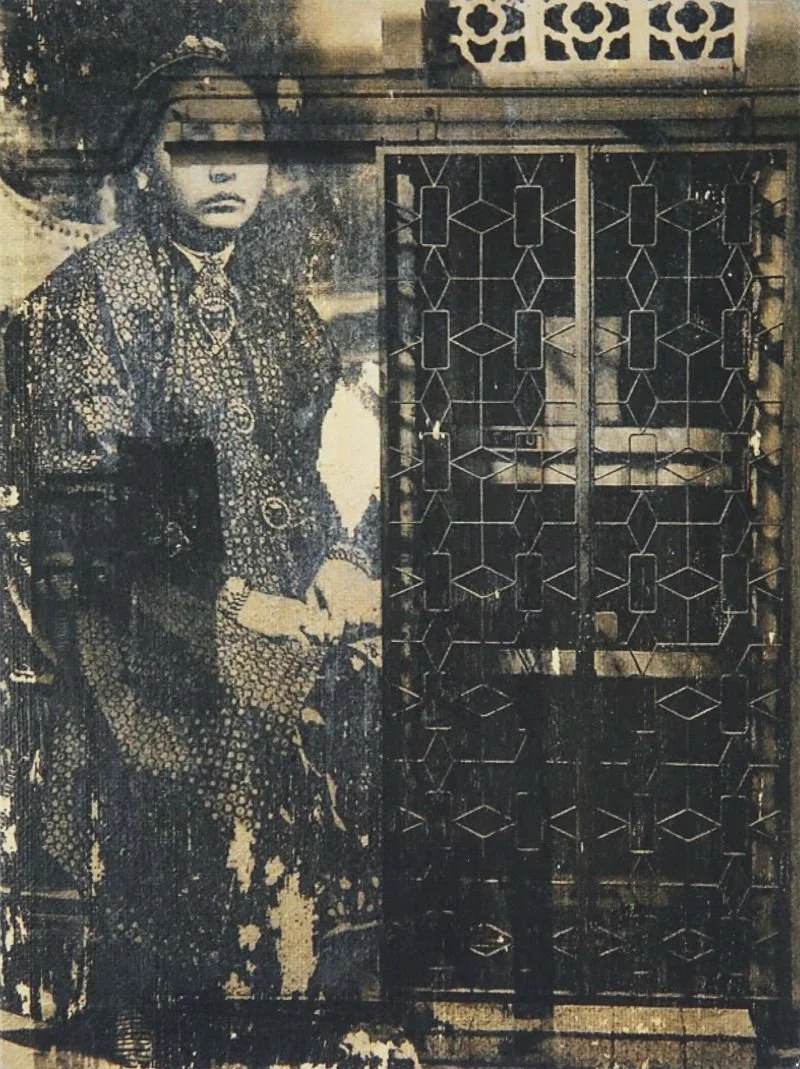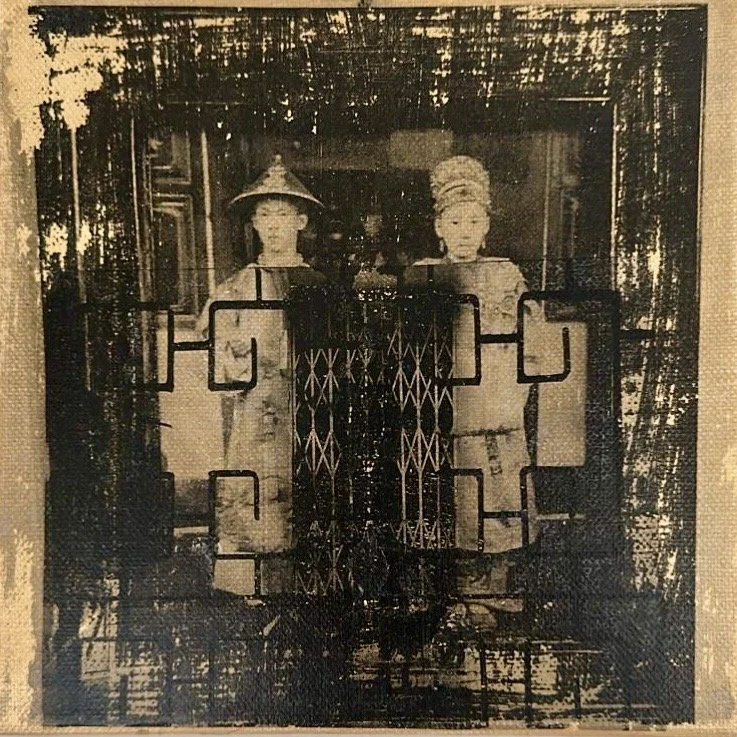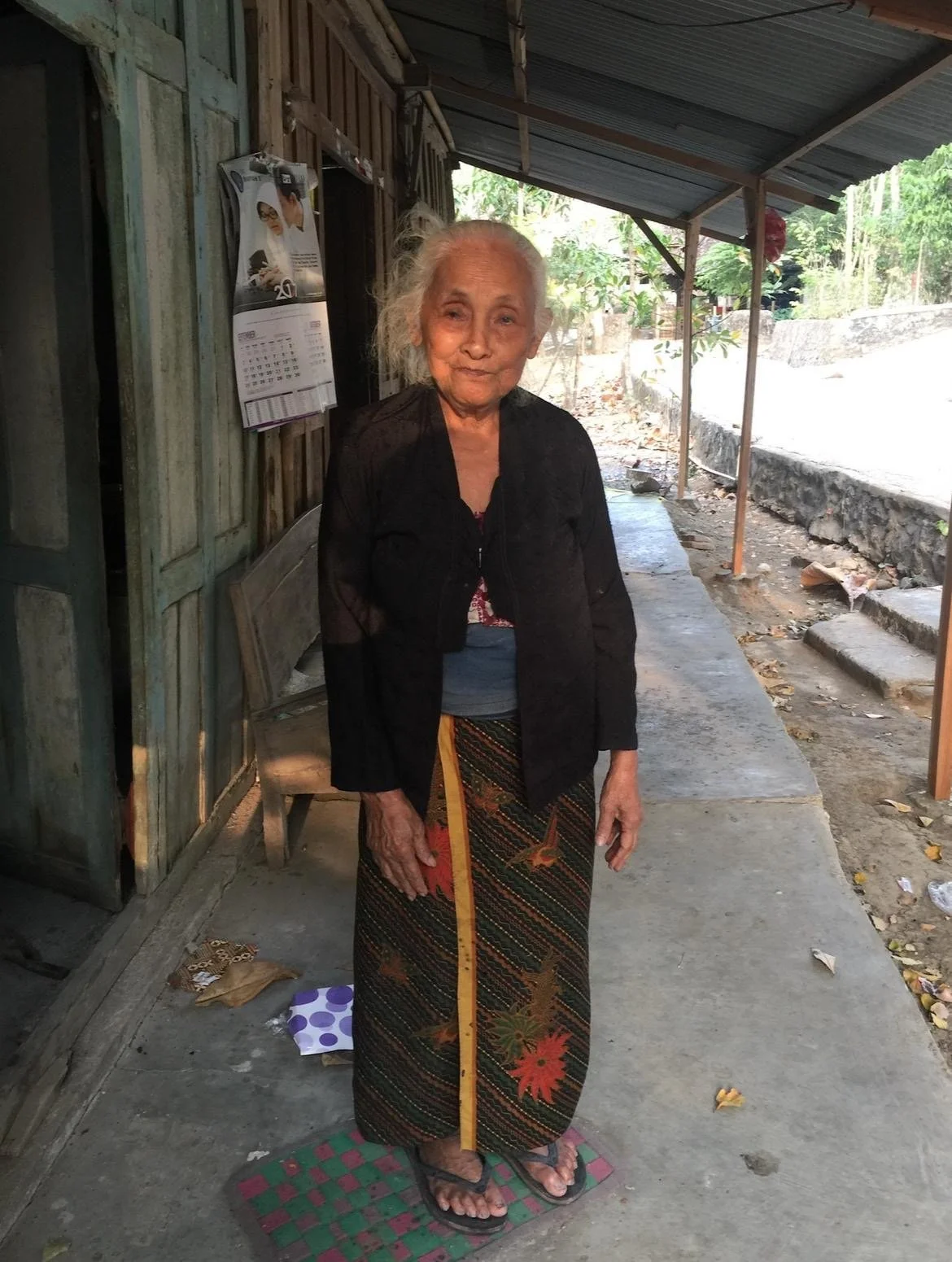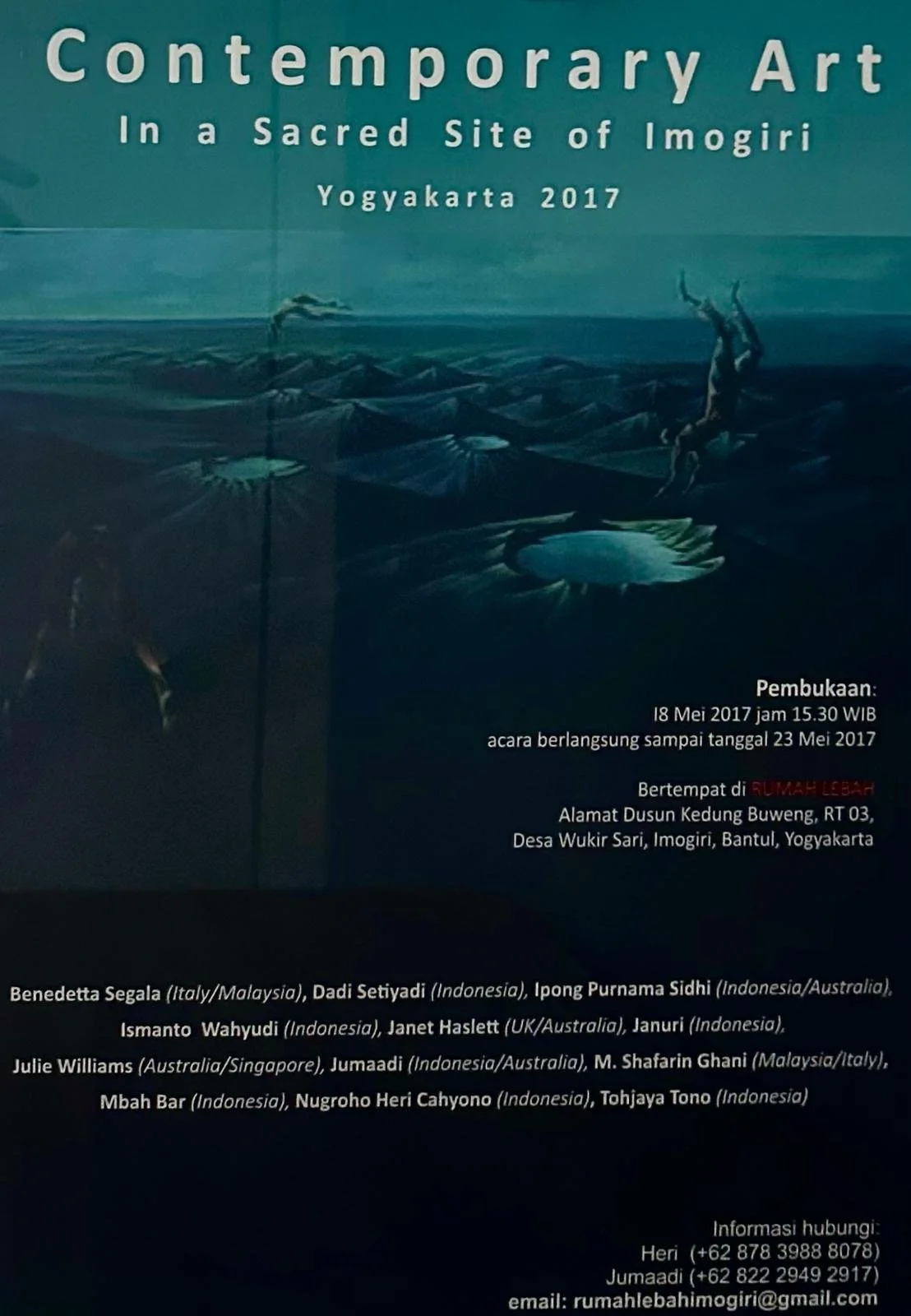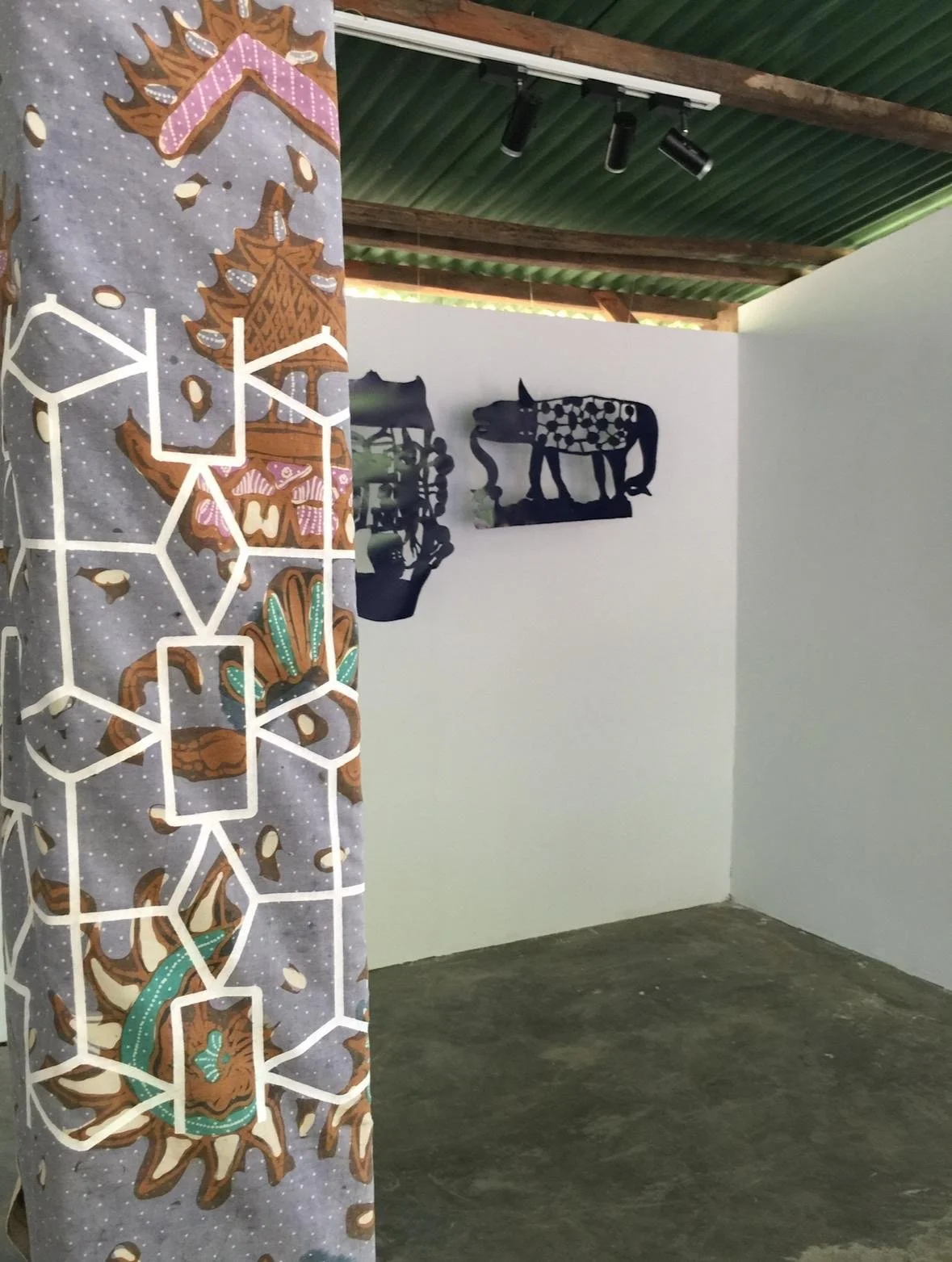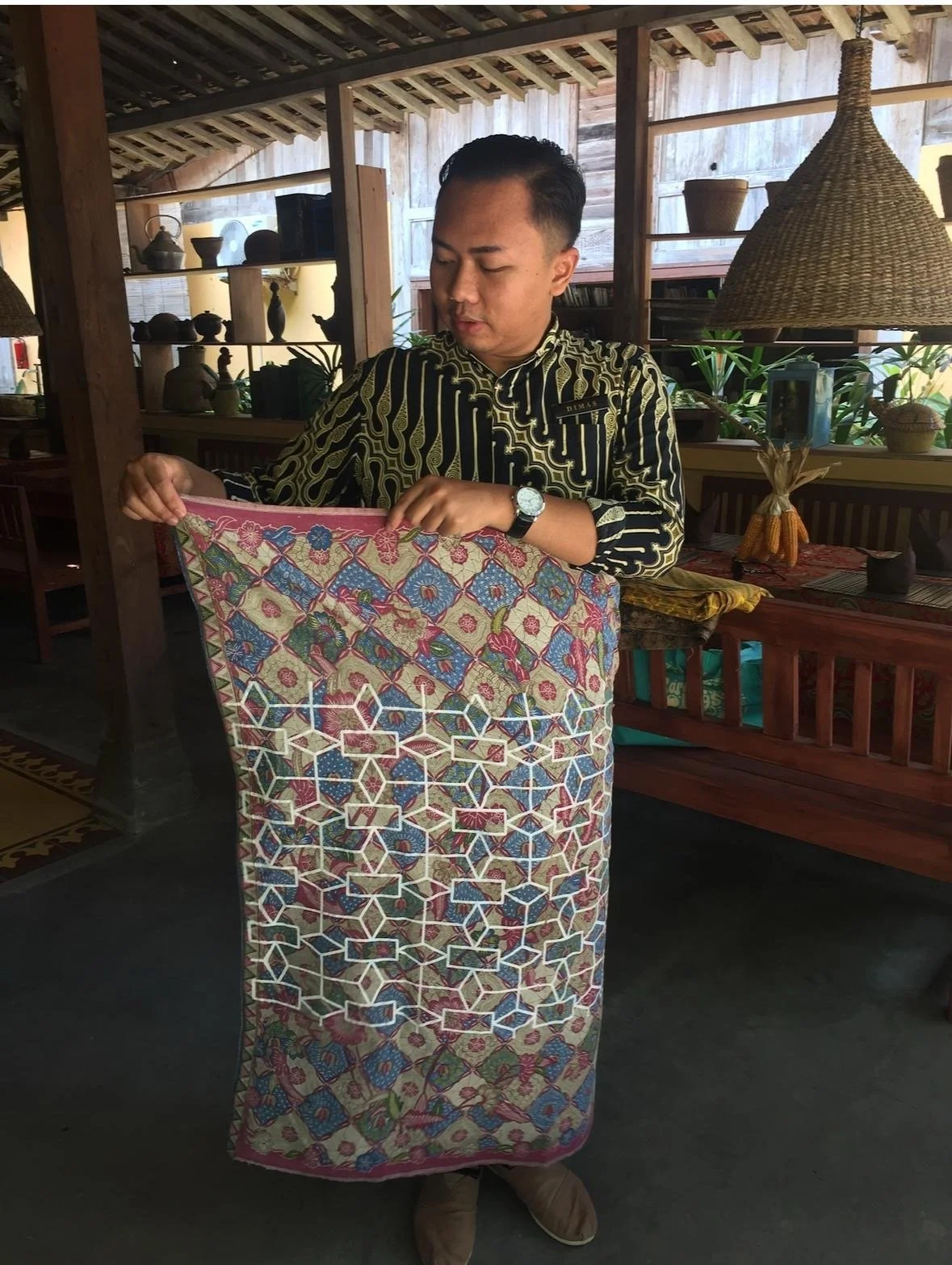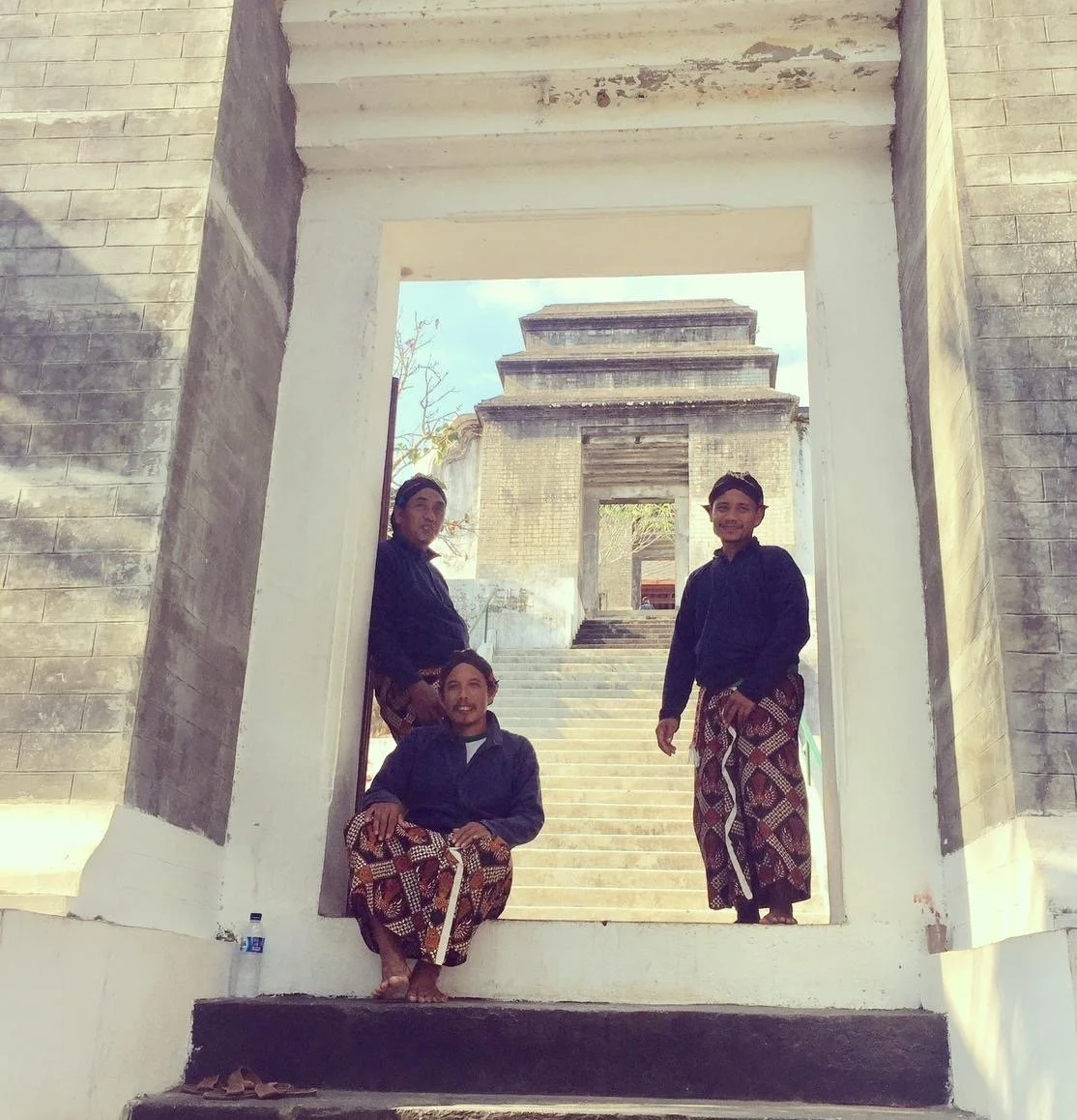South East Asia
Inspired by the tropical, vibrant and richly coloured urban environment of historic Tiong Bahru, Julie Williams’s paintings took a on bold new direction. Combining exhaustive research of local culture and post-colonial South East Asia, her practice saw the introduction of silk screen printing, textiles and a vibrant colour palette.
This exhibition hosted by the Australian High Commission, Singapore was curated by artist Merryn Trevethan and recognised artists who had taken the plunge in another country, celebrating their continued contribution to an ongoing cultural dialogue . The exhibition showed local artists from Singapore, Daryl Goh, Alison Lew, Yen Phang and Madhvi Subrahmanian, along with Julie, Merrryn Trevethan, Nabliah Nordin and Nick Modrzewski from Australia, enriching participants and audience.
From The Ocean To The Silver City
Sakthi Magic - Australian High Commission Singapore
Julie enjoyed printing on fine silk from the vintage art supply stores found in Bras Basah, Singapore and mixing imagery from Hill End and her new home in South East Asia. The geometry found within the gate patterns was a constant source of delight. The photograph of the artist under the oak tree that is adorned in her art was taken at the bottom of her garden, Hill End. It was taken by photographer Peter Solness and exhibited in Bathurst Regional Gallery.
Kueh Lapis - Singapore
This body of work was based on a historically significant and exquisite beaded bridal tablecloth, part of the collection in the Peranakan Museum, Singapore. Julie has recontextualised the motifs of the exotic birds and flowers by overlaying patterns of the familiar retro security gates found on the houses in Tiong Bahru.This was a comment on the young Peranakan women being caged at home until married, learning to bead, sew and cook for their future husbands. The bird imagery on the cloth was inspired by Berlin Wool Patterning commissioned by wealthy KIng’s Chinese - those who spoke English - who wanted to emulate their colonial rulers’ taste in fine arts. Julie painted a portion of the cloth in oil, scanned the work, overlayed the gates using photoshop and then printed a limited edition on hahnemuhle paper. Larger versions were printed on canvas. Her image transfers were printed on large sheets of aluminium that were exhibited in Singapore and Sydney.
Jogja - Indonesia
A residency in Jogjakarta, Indonesia with fellow artist Jumaadi produced a body of work once again deeply rooted in the culture and history of place. The small but culturally and historically significant village of Imogiri, twenty minutes outside of Yogyakarta, known locally as Jogja reminded Julie of Hill End and she began to make works that became cross cultural. Covid interrupted plans to host a group of artists from Indonesia to Hill End. Julie has visited Borobudur, where the great Buddhist Stupa stands on retreat, and meditated in the small temples close by on different occasions. It is a place of deep connection for the artist. The work that Julie exhibited in Imogiri was also shown in Sydney.


